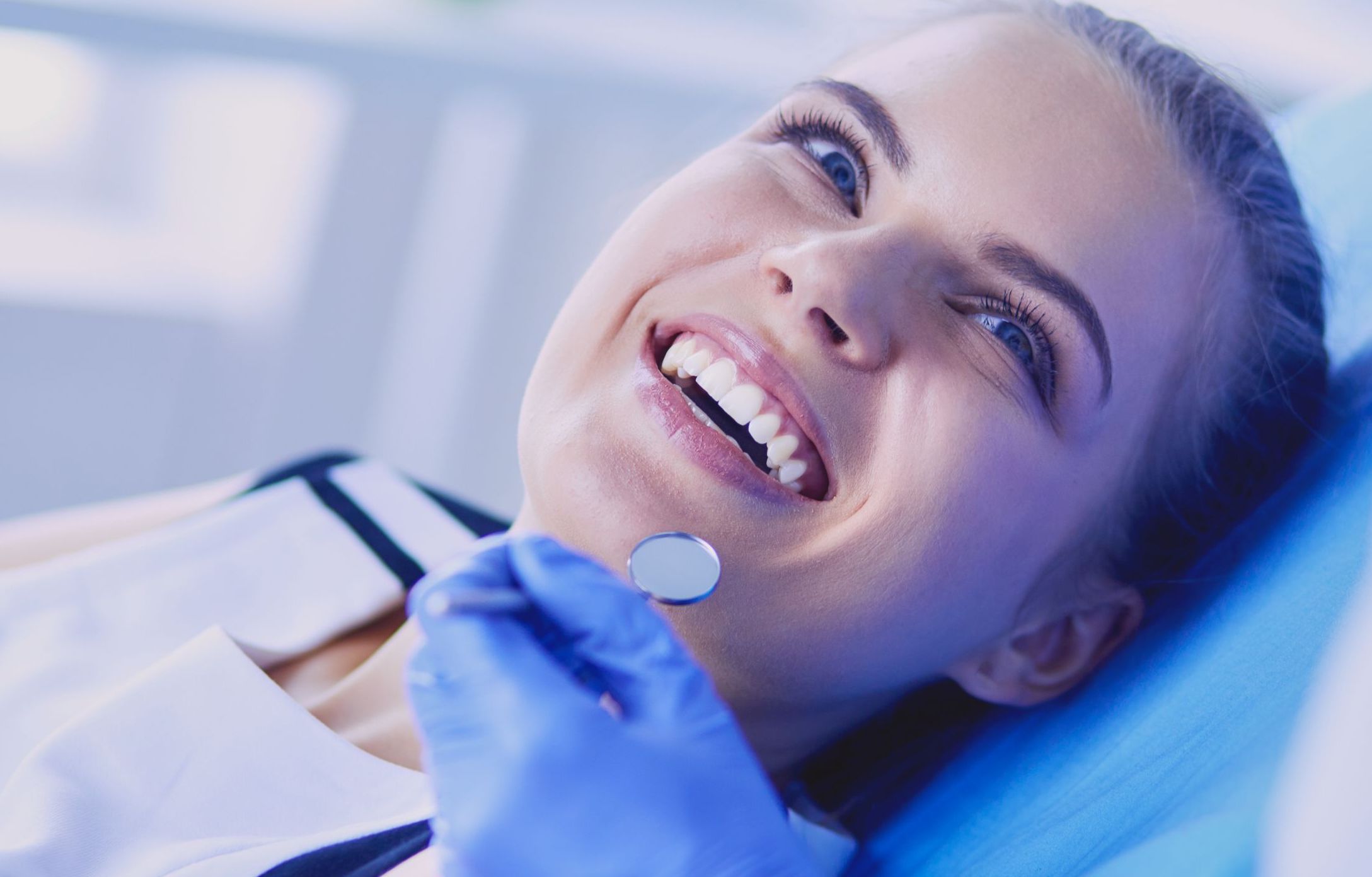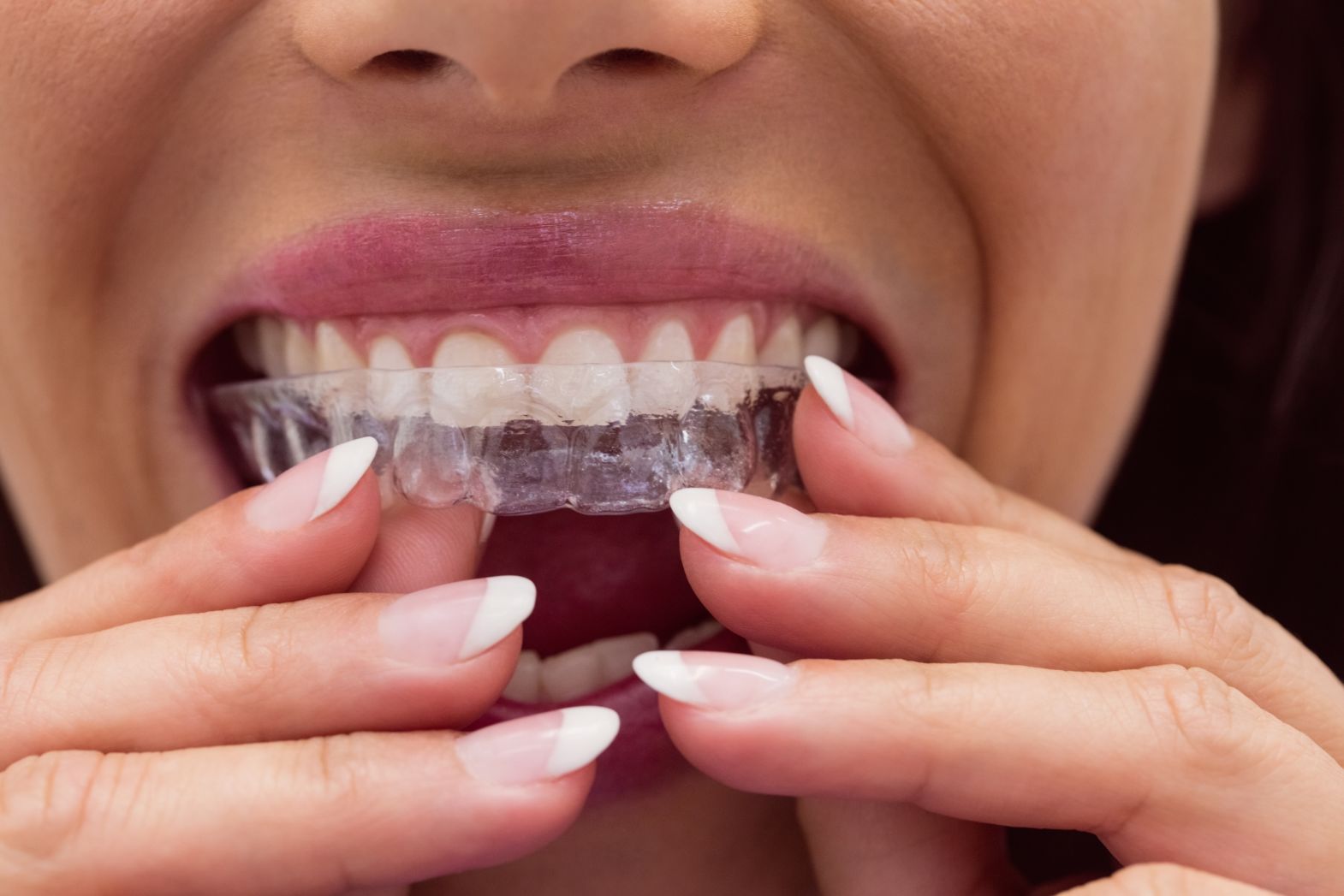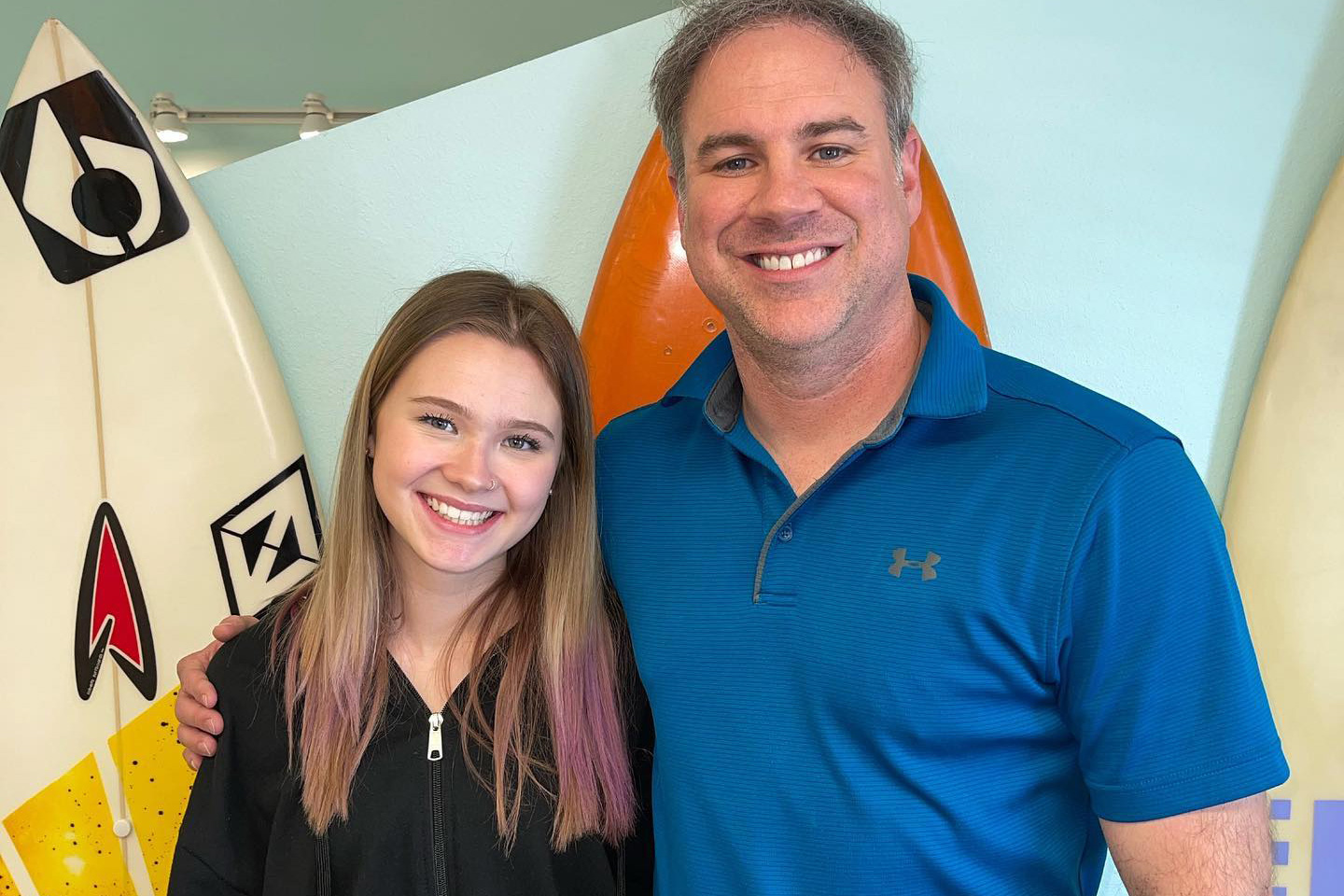Resources
Smile On!
Learn More About Orthodontics
What Is An Orthodontist?
In much the same way as doctors choose to specialize in areas such as cardiology and neurology, dentists can also choose to specialize. Orthodontics is a dental specialty that aims to prevent, diagnose and treat facial and dental irregularities, such as malocclusions (bad bites). Many orthodontic practices are limited to dentofacial orthopedics and general orthodontics but can successfully treat patients of any age.
Orthodontists are fully qualified dentists who embark on a further three years of university-based study and gain extensive clinical experience in an orthodontic residency program. The American Association of Orthodontists (AAO) is the regulating body for this branch of dentistry. Selecting an orthodontist who is a member of this organization adds the assurance that treatment is being administered by an individual with specialty education in oral biology and biomechanics. The AAO recommends that children should first be examined by an orthodontist around the age of seven, to ensure that jaw and tooth irregularities are not beginning to form.
What does an orthodontist do?
Orthodontists are experts in correcting misalignments of the teeth and jaw. There are many debilitating problems associated with misalignment, for example, speech defects, difficulties chewing, and difficulty maintaining adequate oral hygiene.
Here is a brief overview of some of the most common issues an orthodontist can successfully treat:
- Anteroposterior Deviations – Common examples of anteroposterior deviations include underbite (the lower teeth are positioned further forward than upper teeth) and overbite (the upper teeth are positioned further forward than the lower teeth). Both of these deviations can cause difficulty articulating and chewing.
- Overcrowding – Overcrowding is one of the most common problems orthodontists treat. On occasion, lack of jawbone space means adult teeth cannot erupt in alignment with existing teeth. The orthodontist can realign the teeth using unobtrusive devices and treatments.
- Aesthetic Issues – In some cases, the shape of the whole face is negatively impacted by malocclusions or a bad bite. The orthodontist can restructure and realign the jaw, lips, and teeth to create a beautiful, even smile.
How does an orthodontist realign jaws and teeth?
Initially, the orthodontist conducts a thorough examination of the jaw and teeth. Panoramic X-rays and study models (bite impressions) will be taken prior to the orthodontist making treatment recommendations. The orthodontist will recommend the best treatment plan for the patient’s particular condition.
Here is a brief overview of some of the treatments orthodontists may use:
- Braces – The combination of brackets (which are affixed to each individual tooth), and an archwire (which connects each bracket) are commonly placed to gently train the teeth into proper alignment. Braces can be made of metal, ceramics, or clear (“invisible”) materials.
- Headgear & Facemasks – These devices are generally used to correct a developmental problem, such as an overbite or an underbite. In addition to the dental braces, the orthodontist will design the headgear and/or facemask which fit around the head and attaches to the braces. This structure will further encourage the teeth and jawbone into alignment.
- Retainers – After the orthodontist has realigned the teeth using dental braces, removable devices, or headgear, a retainer may then be provided to ensure that the teeth do not begin to move back toward their original positions. Retainers are generally worn until the underlying bone has reformed into the correct position.
Why Straight Teeth?
Straighter teeth can perform chewing, biting, and speaking functions more effectively than crooked teeth. In addition, a straight smile boosts confidence, is aesthetically pleasing to look at, and can help stave off a wide variety of dental ailments.
There are several types of malocclusion including overbite, underbite, crossbite, and overcrowding. Each of these alignment problems negatively impacts the functionality and cosmetic appearance of the teeth.
Here is a brief overview of some of the main disorders associated with crooked teeth:
- Periodontitis – Periodontitis or gum disease begins with a bacterial infection. The bacterial infection is caused by inadequate oral hygiene. Crooked teeth are hard to clean effectively, which means that debris, plaque, and bacteria can build up in hard-to-reach areas. Straight teeth are much easier to clean and are at less risk of contracting gum disease.
- Temporomandibular Disorder (TMJ) – Crooked teeth can lead to improper jaw alignment, which in turn causes a painful condition known as TMJ. Severe headaches, jaw pain, lockjaw, and the grinding of teeth characterize this debilitating disorder.
- Tooth Injury – Straight teeth create a strong wall, which means injuries are less likely to occur. Crooked teeth often protrude, making them far more vulnerable to external injury.
- Uneven Wear – Crooked teeth cause some of the teeth to work harder than others when biting and chewing. Straight teeth share the workload evenly, meaning less risk of injury and better aesthetics.
Teeth can be straightened using either orthodontic braces or customized aligning trays. Orthodontic braces are usually affixed to the teeth for a set duration. The brackets and archwires are tightened regularly by the orthodontist and removed when treatment is complete.
Aligning trays are fully removable and are used where the malocclusion is less severe, and the teeth need to move a shorter distance. These trays are replaced every few weeks for the duration of the treatment and have proven to be equally effective for straightening teeth.
Who Can Benefit From Orthodontics?
Orthodontics is a specialized branch of dentistry that is concerned with diagnosing, treating, and preventing malocclusions (bad bites) and other irregularities pertaining to the alignment of the teeth. Orthodontists are specially trained to correct these problems and to restore health, functionality, and a beautiful aesthetic appearance to the smile. Though orthodontics was originally aimed at treating children and teenagers, almost one-third of orthodontic patients are now adults. A person of any age can be successfully treated by an orthodontist.
A malocclusion (improper bite) can affect anyone at any age, and can significantly impact the individual’s clarity of speech, chewing ability, and facial symmetry. In addition, a severe malocclusion can also contribute to several serious dental and physical conditions such as digestive difficulties, TMJ, periodontal disease, and severe tooth decay.
What problems can orthodontics treat?
Orthodontics can treat a wide range of dental problems and in most cases, completely realign the teeth. Orthodontists may work alone or in combination with a maxillofacial surgeon.
The typical irregularities requiring orthodontic treatment are as follows:
- Overcrowding – An overcrowded mouth means there is insufficient space within the jaw for all of the adult teeth to fit naturally. Overcrowding may lead to displaced or rotated teeth.
- Overbite/Overjet – An overbite refers to the protrusion of the maxilla (upper jaw) relative to the mandible (lower jaw). An overbite gives the smile a “toothy” appearance and the chin looks like it has receded.
- Underbite – An underbite refers to the protrusion of the mandible (lower jaw) in relation to the maxilla (upper jaw). An underbite makes the chin look overly prominent. An underbite may be dental (due to the position of the teeth) or skeletal (due to the mandible growing too far forward, a deficient maxilla, or a combination of both). Developmental delays and genetic factors generally cause underbites and overbites.
How can orthodontics help?
Orthodontic dentistry offers techniques that will realign the teeth and revitalize the smile. There are several treatments the orthodontist may use, depending on the results of panoramic X-rays, scanned digital models, and a thorough visual examination.
Braces can be used to correct even the most severe case of misalignment. These braces consist of metal or ceramic brackets which are affixed to each tooth and an archwire which is used to gradually move the teeth through the duration of the treatment.
Removable appliances include Invisalign® aligners, retainers, and facemasks. Other types of fixed retainers such as palate expanders, mandibular lingual arches, habit appliances (thumb and tongue) are used to combat overcrowding, spacing concerns, and other dental and skeletal irregularities.
Whatever the dental irregularity or the age of the individual, orthodontic appliances can properly realign the teeth and create a beautiful smile.
Two-Phase Treatment
When should my child get an orthodontic evaluation?
Orthodontists aim to prevent and treat irregularities in the jaw and misalignment of the teeth that are the result of genetics, or develop in accordance with a child’s habits. The best way to achieve these goals is to have your child evaluated by an orthodontist as early as age seven; however, children with noticeable facial irregularities may benefit from preventive orthodontic treatment several years earlier.
Orthodontists are highly trained to notice minute problems with emerging teeth and jaw growth – even if a mixture of baby teeth and permanent teeth are present. While the untrained eye might fail to spot these irregularities, an orthodontic check-up allows for early detection of problems and development of efficient treatment plans.
Some of the key signs that an orthodontic problem is present are as follows:
- Difficulty chewing and biting
- Jaws that click, shift, or make noise as they move
- Asymmetry in the face due to disproportionate jaws
- Finger and thumb sucking
- Bite misalignment (arches of teeth that do not meet properly)
- Teeth grinding/tooth wear
- protruding teeth
Common Orthodontic Problems for Children
Children often experience overcrowding, jaw growth irregularities, protruding teeth, and teeth that are too widely spaced. While some problems are inherited, the main causes of acquired orthodontic irregularities are:
- Inadequate nutrition or dental hygiene problems
- Medical problems, such as birth defects
- Habits such as thumb or finger sucking
- Breathing through the mouth
- Earlier or later loss of baby teeth than is considered normal
How Can an Orthodontist Help My Child?
Your orthodontist may take one of several approaches when dealing with children. In some cases, malocclusions or irregularities are carefully monitored and are addressed at a later date. The ideal time to initiate treatment varies with each individual child and is based on their unique diagnosis.
Early orthodontic treatment may be beneficial to reduce the amount and duration of later treatment, preventing more complex conditions from occurring. Through early intervention, your orthodontist is able to correct habits that lead to acquired irregularities, increase the confidence of the child, guide the growth of the jawbone, and decrease the risk of injury to protruding teeth.
Retainers
When braces are finally removed, the “retention” phase begins for most individuals. The objective of this phase is to ensure the teeth do not regress back to their previous position. A retainer will be used to maintain the improved position of the teeth. A retainer is a fixed or removable dental appliance which has been custom-made by the orthodontist to fit the teeth. Retainers are generally made from transparent plastic and thin wires to optimize the comfort of the patient.
Perseverance and commitment are required to make this final stage of treatment successful. If the retainer is not worn as directed, treatment can fail and the teeth can relapse.
What types of retainers are available?
There are a variety of retainers available, each one geared towards treating a different kind of dental problem. The orthodontist will make a retainer recommendation depending on the nature of the original diagnosis and the orthodontic treatment plan.
The following are some of the most common types of retainers:
- Hawley Retainer – The Hawley retainer consists of a metal wire on an acrylic arch. The metal wire may be periodically adjusted by the orthodontist to ensure the teeth stay in the desired position. The acrylic arch is designed to fit comfortably on the lingual walls or palate of the mouth.
- Essix – The Essix retainer is the most commonly used vacuum formed retainer (VFR). A mold is initially made of the teeth in their new alignment, and then clear PVC trays are created to fit over the arch in its entirety.
- Fixed Retainers – A fixed retainer is affixed to the tongue side of a few teeth and it usually consists of a single wire. The inclination of the teeth to move rapidly means they are also more likely to regress back to their previous position if a fixed retainer is not placed.
What do I need to consider when using a retainer?
There are a few basic things to consider for proper use and maintenance of your retainer.
Don’t Lose The Appliance
Removable retainers are very easy to lose. It is advisable to place your retainer in the case it came in while eating, drinking, and brushing. Leaving a retainer folded in a napkin at a restaurant or in a public restroom can be very costly if lost because a replacement must be created. A brightly colored case serves as a great reminder.
Don’t drink while wearing a retainer
It is tempting to drink while wearing a retainer because of the unobtrusive nature of the device. However, excess liquid trapped under the trays can vastly intensify acid exposure to teeth, increasing the probability of tooth decay.
Don’t eat while wearing a retainer
It can be difficult and awkward to eat while wearing a removable retainer and it can also damage the device. Food can get trapped around a Hawley retainer wire or underneath the palate, causing bad breath.
Clean the retainer properly
Removable retainers can become breeding grounds for calculus and bacteria. It is essential to clean the inside and outside thoroughly as often as possible. Hawley retainers can be cleaned with a toothbrush. Because harsh bristles can damage the PVC surface of a VFR, denture cleaner or a specialized retainer cleaner is recommended for this type of device.
Wear the retainer as directed
This phase of treatment is critical. The hard work has been done; the braces are off, and now it is tempting not to wear the retainer as often as the orthodontist recommends. Retainers are needed to give the muscles, tissues, and bones time to stabilize the teeth in their new alignment. Failure to wear the retainer as directed can have regrettable consequences, such as teeth returning to their original position, added expense, and lost time.
Orthodontic Emergencies
If there is obvious damage to the wires, bands, or brackets of your braces, it is important to call your orthodontist as soon as possible.
There are many causes of damage to braces, including:
- Eating hard foods
- Trauma to the facial area
- Chewing inedible objects
Here is an overview of some common types of orthodontic emergencies:
Loose Brackets
Brackets are the small metal or ceramic appliances that have been attached to the teeth using dental adhesive (resin). If both the bracket and the archwire are moving, it’s probable that the adhesive has come loose from the tooth or bracket. This is not a true orthodontic emergency, but your orthodontist should be called promptly.
If the bracket has fallen and rotated around the archwire, place it in its proper position and use orthodontic wax as a temporary adhesive until your orthodontist reaffixes the bracket.
Loose Bands
Bands are the metal rings which have been cemented around teeth. Loose bands pose no immediate threat, but if left untreated for several weeks, decalcification (a white spot) or tooth decay can occur. This is because the dental bonding agents normally seal the inner portion of the band from bacteria, saliva and plaque. If bacteria and saliva enter the crevice, an acidic byproduct is produced, which erodes tooth enamel.
It is important to call your orthodontist immediately for advice in the case of a loose band. Your orthodontist will reaffix the band to the tooth or replace it if it has come off the tooth entirely. If an orthodontic band has fallen out of the mouth, save the band and do not attempt to affix it yourself.
Broken or Bothersome Wires
Broken archwires are one of the most common orthodontic problems. When the archwire is broken, there is a possibility it will cause soreness or irritation to the inner cheek. In this case, use tweezers or a pencil eraser to bend the wire into a less irritating position. If the broken archwire cannot be bent out of the way, place a pea-sized piece of orthodontic relief wax over the protruding end to protect soft tissue.
These measures are only temporary solutions. Your orthodontist must be called for an appointment to replace the broken wire.
If a band, bracket or piece of wire has been swallowed, please contact your orthodontist for instructions. Fortunately, these orthodontic appliances are so small they can pass through the body without incident, but it is always preferable to seek advice.






